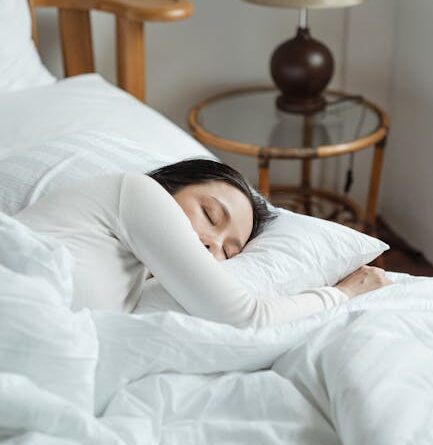How to Get Quality Sleep with Sleep Apnea
How to Get Quality Sleep with Sleep Apnea
Quality sleep is essential for overall health and well-being. However, for those suffering from sleep apnea, achieving restful sleep can be a significant challenge. Sleep apnea is a common sleep disorder that affects millions of people worldwide, causing interruptions in breathing during sleep. These interruptions can lead to poor sleep quality, daytime fatigue, and a host of other health issues.
In this comprehensive guide, we will explore effective strategies and tips to help individuals with sleep apnea achieve better sleep. From understanding the condition to making lifestyle changes and utilizing treatment options, this article aims to provide valuable insights for those seeking relief from sleep apnea-related sleep disturbances.
Understanding Sleep Apnea
Before delving into the solutions, it’s important to understand what sleep apnea is and its various forms. Sleep apnea is characterized by repeated pauses in breathing during sleep. These pauses, known as apneas, can last for a few seconds to minutes and can occur multiple times per hour.
Types of Sleep Apnea
There are three main types of sleep apnea:
- Obstructive Sleep Apnea (OSA): This is the most common form of sleep apnea, caused by the relaxation of throat muscles, which obstructs the airway.
- Central Sleep Apnea (CSA): This type occurs when the brain fails to send proper signals to the muscles that control breathing.
- Complex Sleep Apnea Syndrome: Also known as treatment-emergent central sleep apnea, this is a combination of OSA and CSA.
Understanding the type of sleep apnea you have is crucial for determining the most effective treatment approach.
Diagnosis and Treatment Options
If you suspect you have sleep apnea, it’s important to seek medical evaluation. A sleep study, either conducted in a sleep lab or at home, can help diagnose the condition. Once diagnosed, several treatment options are available to manage sleep apnea and improve sleep quality.
Continuous Positive Airway Pressure (CPAP)
CPAP therapy is the most common and effective treatment for OSA. It involves wearing a mask connected to a machine that delivers a continuous stream of air, keeping the airway open during sleep. Studies have shown that CPAP can significantly reduce apnea episodes and improve sleep quality.
Oral Appliances
For those who find CPAP uncomfortable, oral appliances may be an alternative. These devices are designed to reposition the jaw and tongue to keep the airway open. They are particularly effective for mild to moderate OSA.
Lifestyle Changes
In addition to medical treatments, making certain lifestyle changes can greatly impact the quality of sleep for individuals with sleep apnea.
Actionable Tips for Better Sleep
Implementing the following tips can help improve sleep quality and reduce apnea episodes:
Maintain a Healthy Weight
Excess weight, particularly around the neck, can contribute to airway obstruction. Research shows that losing even a small amount of weight can reduce the severity of sleep apnea. Incorporate a balanced diet and regular exercise into your routine to achieve and maintain a healthy weight.
Sleep Position
Sleeping on your back can worsen sleep apnea symptoms. Try sleeping on your side to keep the airway open. Special pillows and positional therapy devices can help you maintain a side-sleeping position throughout the night.
Avoid Alcohol and Sedatives
Alcohol and sedatives relax the throat muscles, increasing the risk of airway obstruction. Avoid consuming these substances close to bedtime to reduce apnea episodes.
Establish a Bedtime Routine
Creating a consistent bedtime routine can signal your body that it’s time to sleep. Aim to go to bed and wake up at the same time each day, even on weekends. Incorporate relaxing activities such as reading or meditating to help you unwind before bed.
Use a Humidifier
Dry air can irritate the airways and worsen sleep apnea symptoms. Using a humidifier in your bedroom can add moisture to the air, making it easier to breathe while you sleep.
Quit Smoking
Smoking can inflame and narrow the airways, exacerbating sleep apnea. If you smoke, consider seeking support to quit. The benefits of quitting smoking extend beyond sleep apnea and include overall improved health.
The Role of Technology
Advancements in technology have led to innovative solutions for managing sleep apnea. From smart devices to mobile apps, these tools can provide valuable insights and support for individuals seeking better sleep.
Sleep Tracking Devices
Wearable sleep trackers can monitor your sleep patterns and provide data on your sleep quality. This information can help you identify trends and make informed adjustments to your sleep habits.
Mobile Apps for Sleep Apnea
Several mobile apps are designed to assist with sleep apnea management. These apps offer features such as sleep tracking, relaxation exercises, and reminders to use CPAP devices. Some apps even connect with CPAP machines to provide real-time data and feedback.
Telehealth and Remote Monitoring
Telehealth services allow individuals to consult with sleep specialists from the comfort of their homes. Remote monitoring devices can transmit sleep data to healthcare providers, enabling them to make timely adjustments to treatment plans.
Conclusion
Quality sleep is attainable for individuals with sleep apnea through a combination of medical treatments, lifestyle changes, and the use of technology. By understanding the condition, seeking appropriate treatment, and implementing actionable tips, you can significantly improve your sleep quality and overall health.
Remember, it’s important to consult with a healthcare professional for a proper diagnosis and personalized treatment plan. With the right approach, you can overcome the challenges of sleep apnea and enjoy restful, restorative sleep.

